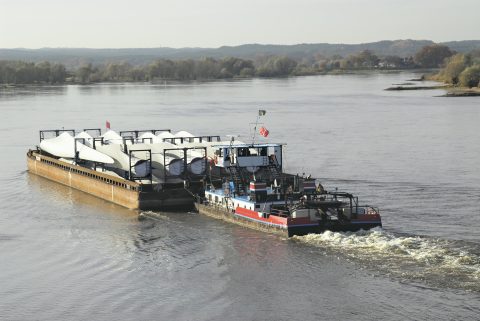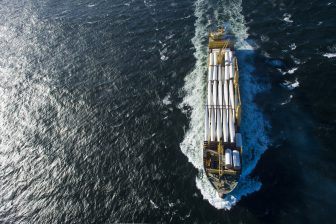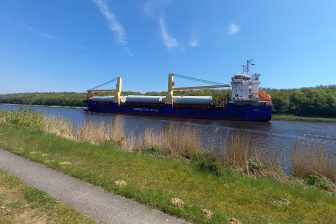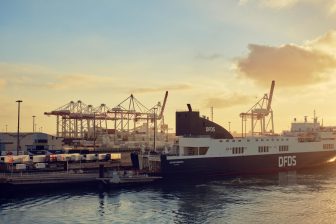
Germany wants more project cargo on inland waterways
German authorities would like to see more project cargo shift from the roads onto the inland waterways, especially the components needed for the construction of wind turbines. As part of the Federal Ministry of Transport’s “Master Plan for Inland Shipping”, the inland shipping association (The Bundesverband der Deutschen Binnenschifffahrt eV-BDB) already called for more oversized and heavy goods to be shifted to this mode of transport.
BDB has also extended its support to Federal Minister of Economic Affairs Robert Habeck, who is pushing for the shift. “The federal waterways offer great potential in terms of relieving the burden on the road infrastructure and for reducing the bureaucracy and speeding up of oversized out of gauge transports, since on the waterway – unlike on the road – no approval for such transport is required.”
Mowing to the waterways reduces red tape
In his paper called “Wind energy on land” that is currently under review, Habeck urged the transport of wind turbine components, cable reels and other cargo required for the energy transition to shift to the inland waterways for the main leg of its journey, as soon as possible, wherever possible.
Oversized and OOG cargo is currently mainly transported by road. The approval processes for this are complex, costly, lengthy and bureaucratic.
“We are pleased that the Federal Ministry of Economic Affairs and Climate Protection recognises the enormous potential for environmentally friendly transport of project cargo by water and draws the right conclusions. The shipping industry is very willing to make its contribution to the energy transition and network expansion by transporting oversized and heavy goods,” explains BDB Managing Director Jens Schwanen. The road will continue to be an important transport partner in the pre-carriage and on-carriage services and will benefit from the announced steps to reduce bureaucracy.
Development measures
The minister’s paper lists four measures for the development of the inland waterway network, including transhipment points for wind turbines and cable drums in the main leg.
However, the full image is not yet complete. “In order for the waterway to be able to accommodate large and heavy goods without any problems and to provide incentives for modal shift, we not only need digital data, for example on the accessibility of the ports and their quay and crane capacities. Above all, we need an efficient infrastructure,” says Habeck.
For this purpose, rivers and canals still have to be expanded at individual points and bottlenecks eliminated, eg on the Rhine or in the canal area.
Habeck adds that this expansion could be implemented if around 30 projects that are listed in the Waterway Expansion Act as “priority” and “with the elimination of bottlenecks” are included in the new Approval Acceleration Act.
“With the increase in investment in the waterway budget planned for the years 2024 onwards, these measures can then be quickly started and implemented by the Federal Waterways and Shipping Administration (WSV),” concluded Habeck.
You just read one of our premium articles free of charge
Register now to keep reading premium articles.




